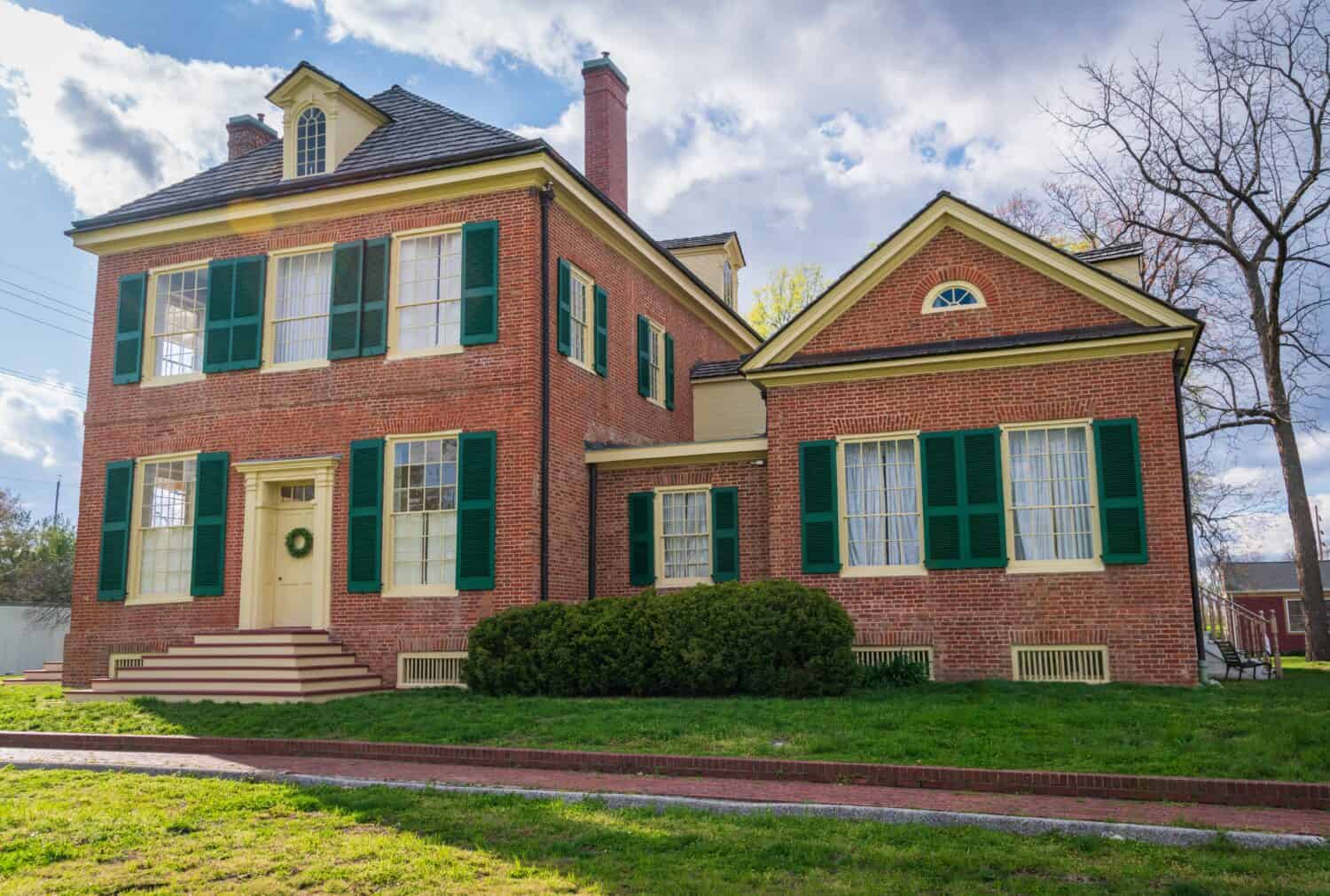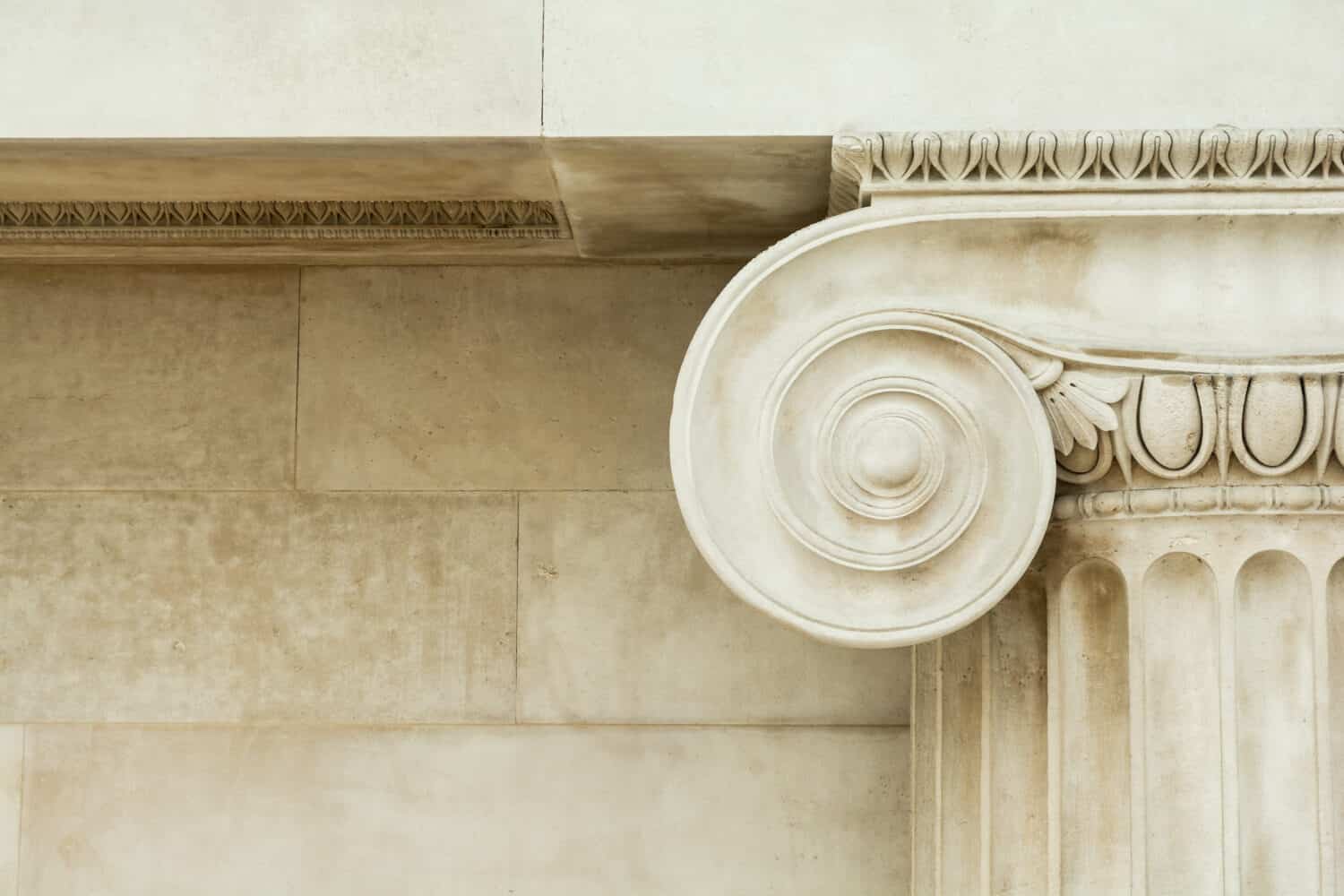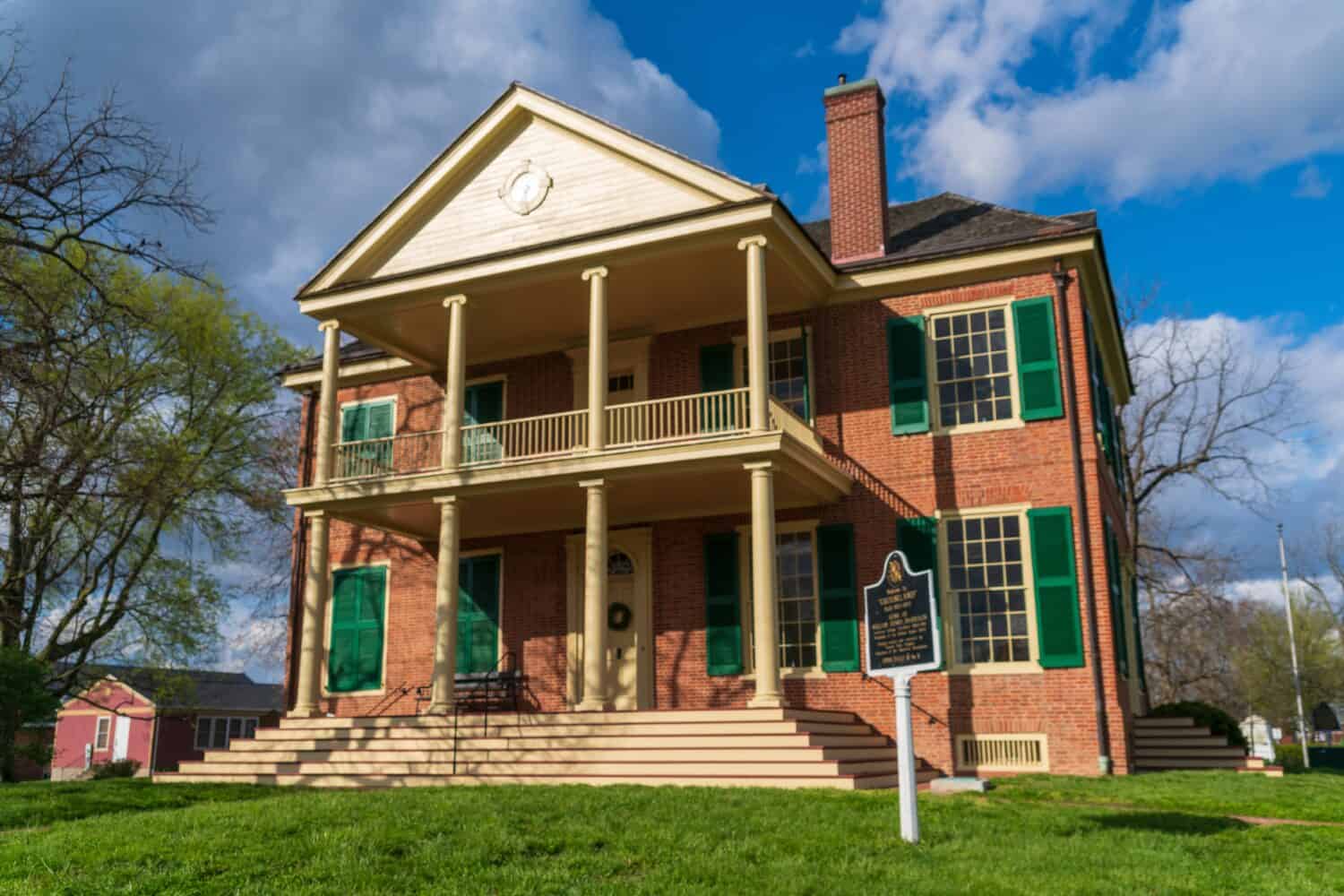
The oldest extant home in Indiana once belonged to a President of the United States. It was the home of then-future president William Henry Harrison. He’s known, among other accomplishments, as the president who gave the longest inaugural address and had the shortest term.
Harrison died a month after his inauguration. He and his family lived at Grouseland between 1804 and 1812, when he was the governor of Indiana Territory.

President Harrison was the ninth U.S. President.
©Prachaya Roekdeethaweesab/Shutterstock.com
The First Brick House In Indiana Territory
Built on 300 acres in Vincennes, Indiana, Harrison named the house Grouseland because of the area’s overabundance of the game bird. It’s a short walk from the Wabash River. The home is large and stately, and it cost Harrison a good deal of money to build. Historians believe this extravagance was needed to give stature to a governor who wasn’t even 30 years old when he was appointed by President John Adams.
Designed by the architect William Lindsay, Grouseland was the first brick house built in all of Indiana Territory. Other houses were log cabins or the dome-roofed wigwams used by native people. Built by craftsmen who had never before raised such a complex building, Grouseland is 75 feet long and 60 feet wide. Grouseland’s foundation is made of limestone collected from local quarries. Its 400,000 bricks were also made locally and much of the home’s furnishings were imported from Europe. These include pieces of Wedgewood china. The style of the house reflected the Virginia mansions where Harrison grew up.
A Look Inside
The house has three stories, 13 fireplaces, and 26 rooms. These include six bedrooms, a parlor, a drawing room, a dining room, and a library. Harrison conducted many of his duties as governor from the parlor, which was also called the council chamber. Passages on the first and second floor lead to an adjunct building, or dependency. The house is insulated against the cold Indiana winters by plant fiber that is still there to this day. Because of the threat of attack by Native Americans, the walls of Grouseland were thick, much like the walls of a Medieval castle. The house was also open to settlers in the area who sought safety or an audience with the governor.
Grouseland is also the home of Indiana’s state firearm, the Grouseland rifle. This rifle has an eight-sided, 61-and-a-half-inch-long barrel. John Small, Indiana’s first sheriff, made it between 1803 and 1812. The rifle became the State Firearm in 2012, some 200 years after it was made.
Changing Hands Over the Years

Grouseland was the home of President William Henry Harrison and his family from 1804 to 1812. This view of Grouseland shows the connection to the dependency.
©Zack Frank/Shutterstock.com
Harrison and his family lived at Grouseland until 1812 when he had to leave to fight in the War of 1812. The next person to live there was Judge Benjamin Parke, followed by Harrison’s son John. John was the father of Benjamin Harrison, who also became a U.S. President. However, by 1850 the Harrisons no longer owned the house, and it was used as a library, a hotel, a private home, and even a granary.
In 1909 the oldest house in Indiana was bought by the Vincennes Water Company, which wanted to demolish it. Fortunately, the Daughters of the American Revolution raised enough money to save Grouseland and rehabilitate it. By 1911 the home was turned into a historical museum. In 1960 it was declared a National Historic Landmark. The Francis Vigo chapter of the DAR owns the house to this day and is responsible for its upkeep.
A House in the Federal Style

Ancient Greek and Roman elements such as Ionic columns are part of the Federal style.
©Respiro/Shutterstock.com
Grouseland is an example of the Federal style of architecture, which was popular in the years right after the Revolutionary War. It was inspired by the buildings of ancient Rome and Greece and is the American version of Europe’s Adam style. The standard type of Federal style house is very symmetrical. The home itself is often a box, two or three rooms deep with rows of identical windows, though some of the windows are false to preserve the home’s symmetry. In the statelier Federal buildings, the box is attached to one or more dependencies as can be seen in Grouseland.
Other Federal mansions have projecting wings. The front door is often elaborate, though the front door of Grouseland is a simple white door topped by a fanlight. The windows, the real ones at least, are also simple, multi-paned, and come with shutters. Grouseland also has a front balcony embellished by Ionic columns.
The three floors of Grouseland, now found at 3 West Scott Street in Vincennes, are open to the public for tours. The hours are Monday through Saturday from 9 a.m. to 4 p.m. and Sunday from 11 a.m. to 4 p.m. The oldest house in Indiana is closed on the Thanksgiving, Christmas, and New Year’s holidays, though there’s an open house on December 1 and a Burning of the Greens on January 1.
Where is Grouseland in Vincennes, Indiana Located on a Map?
Grouseland, also known as the William Henry Harrison Mansion and Museum, holds significant importance as a National Historic Landmark due to its Federal-style architecture and its role in American history.
Here is Grouseland in Vincennes, Indiana on a map:
Thank you for reading! Have some feedback for us? Contact the AZ Animals editorial team.








